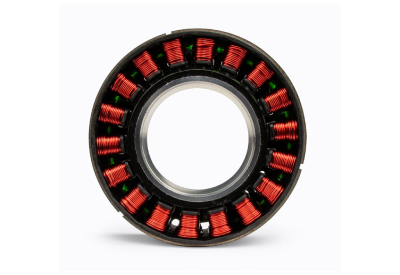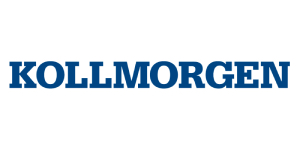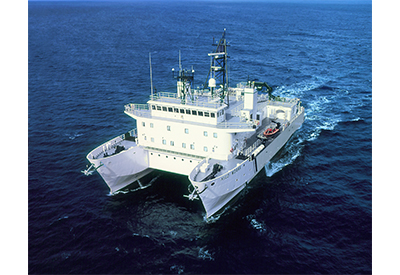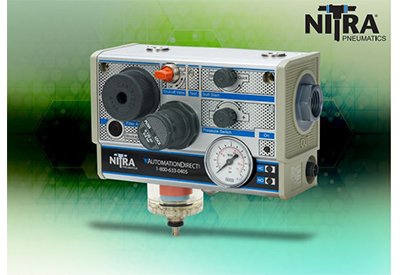Three Design Considerations that Indicate a Machine Needs a Frameless Motor

July 25, 2022
Engineers often face challenges when incorporating servo motors into a new machine design, such as choosing between a conventional housed motor or a frameless design. Let’s take a look at the components of a frameless motor and review three key design considerations that would indicate a frameless solution is the best fit for your machine.
A frameless motor is the active torque and speed producing element of a conventional motor without the shaft, bearings, housing, feedback, or endbells. The frameless motor consists of two parts: the rotor and stator. The rotor is usually the inner part that consists of a rotating steel donut assembly with permanent magnets that mount directly onto the machine shaft. The stator, the outer part, contains toothed steel laminations wrapped with copper windings that create the electromagnetic forces. The stator mounts compactly within the body of the machine housing.
Some key questions an engineer should consider when choosing between a housed motor or a frameless motor are: Does the machine need to be smaller? Do unreliable mechanical components need to be removed? Should the machine operate at a higher throughput rate? Does the machine operate in a rigorous environment with elevated temperatures or in caustic conditions? If the answer is yes to any of these questions a frameless motor approach should be employed.
The three design considerations that indicate a machine needs a frameless motor are:
1. The machine needs a smaller footprint.
Machine size can be an advantage, particularly when floor space is critical. Integrating a frameless motor into the machine structure is an excellent step toward improving space utilization. In addition to minimizing the space utilized by the motor, additional space savings can be accomplished by eliminating gearboxes or belts and pulleys when taking advantage of frameless designs suitable for direct drive applications.
2. Enhanced machine performance is required.
Integrating frameless motor elements into the machine enhances performance by eliminating compliant mechanical elements such as couplings or belts. Direct drive solutions provide more robust performance due to minimal compliance in the system. Each linkage in a mechanical system (including couplings, belts, gears, etc.) introduces compliance elements that reduce system bandwidth. Reduced bandwidth results in longer move and settle times and less productivity. Integrated motors also improve dynamic response and system efficiency and can simplify the ability to add liquid cooling to substantially increase available continuous torque.
3. The machine operates in rigorous environmental conditions.
Machines required to operate in rigorous environments can take advantage of an integrated motor design. The machine’s housings and enclosures already required to address these environments can be utilized to integrate a frameless motor without significant cost implications. Frameless motors also provide the freedom to incorporate the motor components directly within the machine elements to ensure it is not adversely affected by the environment. Rigorous environmental conditions can include high pressure washdowns with caustic chemicals (IP69K), elevated ambient temperatures, or even radiation or vacuum environments. Application examples include food processing machinery where equipment requires stringent washdowns or for gas turbine actuators with elevated ambient temperatures.
In summary, frameless motors can save space, reduce parts count, and enhance system performance. Space reduction can lead to reduced machine footprint, saving valuable facility real estate. Reducing mechanical components naturally increases overall machine reliability. Enhancing machine performance can drive higher throughput and increase machine overall efficiency. Frameless motors, like the Kollmorgen KBM Series, can easily address these three challenges machine designers face.
Kollmorgen offers a variety of design tools, including the Frameless Performance Curve Generator, for assistance in sizing and selecting the right frameless motor. The interactive tools provide inputs that allow for optimization of motor windings based on available voltage, current and ambient temperatures.







